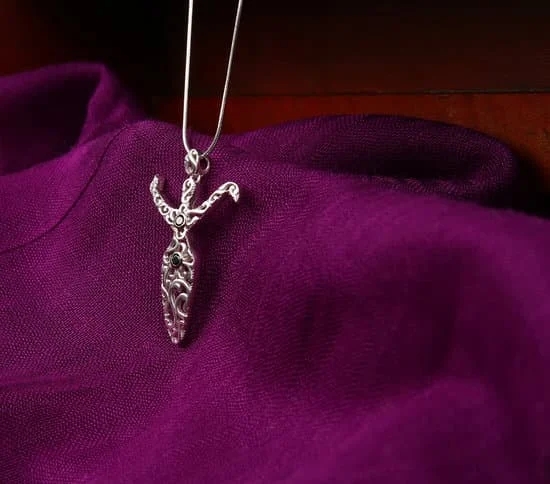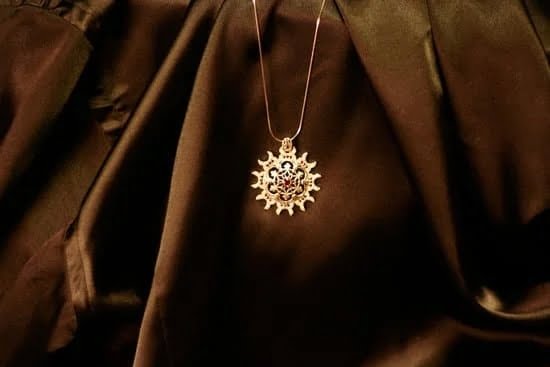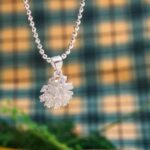How can stores afford jewelry sales? This question often arises when customers come across significant discounts and promotions on jewelry items.
The allure of such sales is undeniable, but it may leave many wondering how retailers are able to offer such low prices without compromising their profitability. In this article, we will dive into the strategies and tactics that enable stores to afford jewelry sales, exploring everything from wholesale pricing and volume discounts to leveraging in-house designers and strategic marketing techniques.
Jewelry sales play a crucial role in the retail industry, both in terms of revenue generation and customer attraction. For retailers, offering discounted prices on jewelry items can result in increased foot traffic, as customers are drawn to the opportunity of acquiring high-quality pieces at affordable prices. This influx of customers not only increases the chances of making additional sales on other products but also helps establish a loyal customer base that keeps coming back for more.
One of the secrets behind stores’ ability to afford jewelry sales lies in their sourcing strategies and relationships with suppliers. By purchasing these items at wholesale prices or through volume discounts, retailers can significantly reduce their cost per unit, enabling them to sell them at a lower price while still maintaining healthy profit margins.
Additionally, some retailers strategically work with manufacturers to create exclusive collections or negotiate favorable credit terms, allowing them access to unique and desirable pieces while minimizing their costs.
The Importance of Jewelry Sales for Retailers
Jewelry sales play a crucial role in the success and profitability of retailers. Not only do they generate significant revenue, but they also attract customers and drive traffic to stores. This section will explore the importance of jewelry sales for retailers, focusing on the revenue they bring in and their ability to attract customers.
One of the main reasons why jewelry sales are important for retailers is the revenue they generate. Jewelry is often associated with luxury and high value, which allows retailers to command higher price points and profit margins. According to data from Statista, the global jewelry market was valued at $278 billion in 2018 and is projected to reach $480 billion by 2025. This represents a lucrative opportunity for retailers who can tap into this market.
In addition to generating revenue, jewelry sales also have the power to attract customers. Many consumers are drawn to jewelry stores not only for purchases but also for browsing and exploring new trends. The allure of beautiful pieces and the opportunity to try them on creates an experiential shopping environment that appeals to customers. Retailers can leverage this attraction by strategically placing their jewelry displays near store entrances or in prominent locations within their establishments.
| Year | Global Jewelry Market Value (in billions) |
|---|---|
| 2018 | $278 |
| 2025 (projected) | $480 |
This data illustrates the tremendous growth potential of the jewelry market and highlights why it is essential for retailers to capitalize on this trend.
Overall, jewelry sales are vital for retailers due to their ability to generate substantial revenue and attract customers. As the market continues to expand, retailers must recognize the importance of incorporating jewelry in their product offerings and creating a compelling shopping experience to maximize their profits.
The Secret Behind Matching Margins
Wholesale pricing and volume discounts play a crucial role in the affordability of jewelry sales for retailers. By purchasing jewelry from wholesalers at lower prices, retailers are able to match their profit margins with competitive pricing in the market. This section will explore the secrets behind wholesale pricing and volume discounts and how they enable stores to afford jewelry sales.
Wholesale Pricing: Unlocking Cost Savings
One of the key factors that allow stores to afford jewelry sales is the discounted prices they obtain through wholesale purchasing. Wholesalers typically offer jewelry at lower prices compared to retail prices due to several reasons. Firstly, wholesalers often buy directly from manufacturers in bulk quantities.
This allows them to negotiate better prices and pass on some of those savings to retailers. Additionally, wholesalers don’t have overhead costs associated with maintaining a physical store or marketing their products directly to consumers, which further lowers their operating expenses and enables them to provide more affordable pricing.
By taking advantage of wholesale pricing, retailers can ensure that they are not overpaying for jewelry inventory. This maximizes their profit margins when it comes time to sell the jewelry at retail price. Retailers must establish strong relationships with reliable wholesalers who consistently offer high-quality products at competitive prices. Regularly comparing different wholesalers’ offerings can help retailers find the best deals and secure a steady supply of affordable jewelry.
Volume Discounts: Generating Greater Profitability
Volume discounts are another secret behind how stores can afford jewelry sales. When retailers purchase larger quantities of jewelry from wholesalers, they often receive special discounts or incentives based on the volume of their order. These volume discounts allow retailers to lower their cost per unit, thus increasing their overall profitability when selling the jewelry at retail price.
To take advantage of volume discounts, retailers must carefully manage their inventory levels and forecast demand accurately. By accurately predicting customer preferences and buying patterns, retailers can strategically place larger orders with wholesalers, qualifying for higher volume discounts. However, it’s important for retailers to strike a balance between stocking enough inventory to meet demand and avoiding excess stock that can tie up capital and increase carrying costs.
Real Estate Maximization
One crucial aspect of stores affording jewelry sales is the strategic utilization of their physical space. To effectively showcase and sell jewelry, retailers must dedicate a suitable area in their store that maximizes the potential for customer interaction and purchasing. This section explores the importance of real estate maximization and details how retailers can make space for jewelry sales.
Firstly, it’s essential to allocate a prominent and visually appealing section within the store exclusively for jewelry display. This can be achieved by creating an attractive jewelry counter or a specialized display case that serves as a focal point. Retailers can use this space to highlight their most luxurious or high-value pieces, drawing customers’ attention and generating interest.
In addition to creating a dedicated jewelry area, retailers should also consider maximizing other areas of their store that complement jewelry sales. For instance, placing smaller accessories such as watches or bracelets near the checkout counter can be an effective method to encourage impulse buys. Alternatively, creating themed sections within the store like “Bridal Collection” or “Statement Pieces” can guide customers towards specific types of jewelry, enabling them to browse conveniently and increasing the likelihood of making a purchase.
To further optimize real estate usage, retailers can also explore innovative ways such as utilizing vertical space. Installing wall-mounted displays or suspended racks can help utilize unused wall areas while showcasing additional pieces in an eye-catching manner. Additionally, considering flexible floor plans that allow modular or movable fixtures enables retailers to easily reconfigure their space according to seasonal demands or popular trends.
Overall, successfully incorporating jewelry sales into a retail environment requires careful consideration of how physical space is utilized. By allocating dedicated areas for displaying and promoting jewelry while optimizing other parts of the store strategically, retailers can attract more customers and enhance their overall shopping experience while making the most out of their available real estate.
- Create a visually appealing section in-store exclusively for showcasing jewelry.
- Place smaller accessories near the checkout counter to encourage impulse buys.
- Utilize innovative methods such as vertical displays and flexible floor plans to optimize real estate usage.
Harnessing the Power of In-House Designers
One of the key strategies that retailers use to afford jewelry sales is harnessing the power of in-house designers. By having their own team of designers, retailers have greater control over the design process and can create unique and exclusive pieces that set them apart from their competitors. This allows them to command higher prices for their jewelry, ultimately generating more profits.
Having in-house designers also helps retailers cut costs. Instead of relying on external designers or suppliers, retailers can save on design fees and markups by creating their own designs in-house. This means that they can offer competitive prices to customers while still maintaining healthy profit margins.
Another advantage of having in-house designers is flexibility. Retailers can quickly respond to changing trends and customer preferences by designing new pieces in-house, without having to rely on external sources for new inventory. This agility allows them to stay ahead of the competition and keep customers coming back for more.
To fully harness the power of in-house designers, retailers need to invest in talent and resources. This includes hiring skilled designers who understand current market trends and have a track record of creating successful jewelry collections. Retailers should also provide their design team with access to state-of-the-art tools, equipment, and materials to bring their creations to life.
Strategically Navigating Manufacturer Relationships
One of the key strategies that stores use to afford jewelry sales is strategically navigating manufacturer relationships. By establishing strong partnerships with manufacturers, retailers can gain access to exclusive collections and secure favorable credit terms. This section will explore how these relationships contribute to the affordability of jewelry sales for stores.
Exclusive Collections
One way that stores can afford jewelry sales is by offering exclusive collections. Many manufacturers offer retailers the opportunity to carry unique, limited edition or custom-designed pieces that are not available anywhere else. By having exclusive collections, stores can differentiate themselves from competitors and create a sense of exclusivity for their customers. This exclusivity can help drive demand and justify higher prices, allowing stores to maintain healthy profit margins on their jewelry sales.
Building exclusive partnerships with manufacturers also allows stores to tap into different consumer segments and preferences. Manufacturers often have diverse portfolios tailored to specific demographics or style preferences. By carefully selecting manufacturers whose collections resonate with their target market, retailers can increase the likelihood of making successful sales. This helps ensure that they are able to move inventory and generate revenue.
Favorable Credit Terms
Another advantage of strategically navigating manufacturer relationships is the ability for retailers to secure favorable credit terms. Jewelry is a high-cost item, which means that retailers may need financial assistance in order to keep their inventory stocked and meet customer demand. Manufacturers often offer credit options or flexible payment terms for retailers, allowing them to spread out their expenses over time.
By taking advantage of these credit terms, stores can free up their cash flow and allocate resources towards other areas of their business. This allows them to invest in marketing campaigns, employee training, store improvements or other initiatives that enhance the overall shopping experience for customers. It also provides them with greater flexibility in managing their inventory levels and adapting to changing market conditions.
The Role of Marketing
Marketing plays a crucial role in the success of jewelry sales by creating hype and driving traffic to stores. Effective marketing strategies can significantly increase customer awareness, generate interest, and ultimately boost sales. In this section, we will explore some key marketing techniques that retailers employ to create buzz around their jewelry sales.
- Social Media Campaigns: Social media platforms such as Instagram, Facebook, and Pinterest have become powerful tools for promoting jewelry sales. Retailers often leverage these platforms to showcase their latest collections, engage with their target audience through interactive posts and contests, and utilize influencers to increase brand visibility.
- Email Marketing: Retailers send out targeted email campaigns to their existing customer base as well as potential customers who have shown interest in jewelry products. These emails may include exclusive discounts or early access to upcoming sales, creating a sense of urgency and encouraging recipients to visit the store or make a purchase online.
- Collaborations and Partnerships: Collaborating with popular influencers, celebrities, or other brands can greatly amplify the reach of a retailer’s marketing efforts. By associating their products with well-known personalities or aligning themselves with reputable brands, retailers can attract new customers who are influenced by the endorsement or partnership.
- Visual Merchandising: In-store displays play a pivotal role in capturing customers’ attention and drawing them towards jewelry sections. Retailers employ creative visual merchandising techniques that highlight the beauty and unique features of their jewelry collections. This includes using strategic lighting, attractive props, and engaging signage to create an alluring display that entices passersby.
Overall, effective marketing strategies not only create a buzz around jewelry sales but also drive traffic to stores both online and offline. By leveraging social media campaigns, email marketing, collaborations/partnerships, and captivating visual merchandising techniques, retailers ensure that potential customers are aware of their offerings and are enticed to make a purchase during sales events. Through these efforts, marketing plays a crucial role in maximizing the profitability of jewelry sales.
Data-Driven Decision Making
In the highly competitive world of retail, data-driven decision making has become a crucial tool for businesses to optimize their sales and profitability. This is especially true in the context of jewelry sales, where understanding customer behavior and preferences is essential. By leveraging analytics, retailers can gain valuable insights into their customers’ buying habits, preferences, and trends, allowing them to make informed decisions that drive sales and increase profitability.
One way that retailers can utilize data-driven decision making is by analyzing customer data to identify patterns and trends. By tracking customer purchases, preferences, and demographics, retailers can gain a deeper understanding of their target market.
For instance, they can identify which jewelry pieces are most popular among certain age groups or demographics, helping them tailor their product offerings accordingly. Moreover, by analyzing purchase history data, retailers can also identify cross-selling or upselling opportunities to maximize each customer’s value.
Another way that data-driven decision making can be leveraged is through inventory management. By analyzing sales data and trends, retailers can forecast demand more accurately and optimize their inventory levels. This allows them to avoid overstocking certain items while ensuring they have enough stock for popular pieces during peak seasons or promotions. By optimizing inventory levels based on data analysis, retailers can reduce holding costs and minimize the risk of markdowns due to excess stock.
Lastly, analytics can also be utilized in pricing strategies to maximize profitability. Retailers can analyze historical sales data to determine price elasticity for different jewelry pieces or collections. This helps them understand how changes in price affect demand and adjust their pricing strategies accordingly. Additionally, by conducting competitor analysis using market data, retailers can ensure that their prices are competitive yet still profitable.
Overall, leveraging analytics for data-driven decision making is essential in optimizing sales and profitability in the jewelry industry. From understanding customer behavior to managing inventory levels and pricing strategies effectively – all fueled by data analysis – retailers can make informed decisions that drive their businesses forward.
| Benefit | Example |
|---|---|
| Identifying customer preferences and trends | Analyzing purchase history data to identify popular jewelry pieces among different demographics. |
| Optimizing inventory levels | Analyzing sales data and trends to forecast demand, avoiding overstocking and minimizing holding costs. |
| Maximizing profitability through pricing strategies | Analyzing price elasticity and conducting competitor analysis to set competitive yet profitable prices. |
Sustainable Sourcing and Supply Chain Efficiency
Sustainable sourcing and supply chain efficiency play a crucial role in the success of jewelry sales for retailers. By implementing sustainable sourcing practices and optimizing their supply chain, retailers can lower costs and increase their return on investment (ROI). This section will explore the importance of sustainable sourcing and efficient supply chains in the jewelry industry.
Sustainable sourcing involves procuring materials such as precious metals and gemstones from ethical and environmentally responsible sources. Consumers are becoming more conscious of the origins of the products they purchase, including jewelry. Retailers that can demonstrate a commitment to sustainable sourcing have a competitive advantage in attracting environmentally-conscious customers. Additionally, by working with suppliers who adhere to sustainable practices, retailers can ensure a consistent supply of high-quality materials while minimizing their impact on the environment.
Efficient supply chains are also vital for reducing costs and maximizing profitability in jewelry sales. An efficient supply chain ensures that materials are sourced, manufactured, and delivered in a timely manner, minimizing delays and bottlenecks. Through effective inventory management and logistics strategies, retailers can reduce waste, storage costs, and transportation expenses. By streamlining their supply chain processes, retailers can improve overall operational efficiency while maintaining product quality.
| Statistic | Data |
|---|---|
| Percentage of consumers willing to pay more for sustainably sourced jewelry | 57% |
| Average cost reduction achieved through optimized supply chain | 10-15% |
| Difference in average profit margins between retailers with efficient vs inefficient supply chains | 5-7% |
These statistics highlight the financial benefits that retailers can achieve by prioritizing sustainable sourcing and supply chain efficiency. By adopting these practices, retailers not only attract environmentally-conscious consumers but also optimize their operational processes to reduce costs and increase profitability. Sustainable sourcing and efficient supply chains are key strategies for making jewelry sales a viable business strategy in today’s competitive retail landscape.
The Psychology of Impulse Buying
Impulse buying is a powerful force in retail, and the jewelry industry is no exception. Understanding the psychology behind impulse buying can greatly benefit retailers in boosting their sales. This section will explore the various factors that contribute to impulse buying behavior and how retailers can exploit these behaviors to increase their jewelry sales.
The Role of Emotions
Emotions play a significant role in impulse buying. Many consumers make impulsive purchases as a way to fulfill emotional needs or desires. For example, someone may buy a piece of jewelry to feel more confident or to mark a special occasion.
Retailers can capitalize on this by creating marketing campaigns that tap into these emotional triggers. By showcasing how wearing their jewelry can evoke positive emotions, retailers can instill a sense of desire and urgency, compelling consumers to make impulsive purchases.
Social Proof and FOMO
Another psychological driver behind impulse buying is the concept of social proof and the fear of missing out (FOMO). Consumers often look to others for cues on what products are popular or trendy.
By using social media influencers, testimonials, or customer reviews, retailers can create a sense of social proof around their jewelry products. This will not only increase the perceived value of the items but also create a fear among consumers that they might miss out on owning something desirable if they don’t act quickly.
The Power of Limited Availability and Exclusive Offers
Creating a sense of scarcity and exclusivity around certain jewelry pieces can trigger impulsive purchasing behavior as well. Consumers have been conditioned to believe that limited availability means high demand and high value. Retailers can take advantage of this perception by offering exclusive collections or limited editions. Additionally, creating time-limited offers such as flash sales or one-time promotions can generate a sense of urgency, encouraging consumers to make quick decisions without much deliberation.
Conclusion
In conclusion, the success of jewelry sales for retailers is dependent on their ability to balance costs and pricing effectively. By understanding the importance of wholesale pricing and volume discounts, retailers can ensure that they have margins that allow for profitable sales. Maximizing real estate space dedicated to jewelry displays is another crucial factor in attracting customers and driving revenue.
Furthermore, harnessing the power of in-house designers can cut costs and generate profits, as it allows retailers to create unique pieces without having to rely solely on manufacturers. Strategic relationships with manufacturers are also essential in securing exclusive collections and favorable credit terms, which can further enhance profitability.
Marketing plays a crucial role in creating hype around jewelry sales and driving traffic to stores. By using data-driven decision making and leveraging analytics, retailers can optimize their sales and profitability. Sustainable sourcing and efficient supply chain management are equally important factors in lowering costs and increasing return on investment.
Finally, understanding the psychology of impulse buying enables retailers to exploit consumer behavior effectively. By strategically placing enticing displays and utilizing persuasive marketing techniques, they can boost sales significantly.
Overall, successfully executing jewelry sales as a viable business strategy requires careful consideration of costs, pricing strategies, marketing efforts, customer behavior analysis, and effective supplier relationships. Retailers who understand these elements and strike a balance between them will be well-positioned to achieve success in the competitive jewelry market.
Frequently Asked Questions
How profitable are jewelry stores?
The profitability of jewelry stores can vary greatly depending on factors such as location, target market, pricing strategy, and competition. While some jewelry stores may enjoy high-profit margins due to their exclusive designs or premium brands, others may struggle with lower profits due to intense competition and price transparency brought by the digital age.
Additionally, trends in consumer behavior can also impact profitability, as shifts towards online shopping and evolving preferences for alternative accessories may affect the demand for traditional jewelry. Therefore, it is essential for jewelry store owners to conduct thorough market research, establish a unique selling proposition, and carefully manage costs to ensure profitability.
What is the most profitable way to sell jewelry?
Determining the most profitable way to sell jewelry entails considering various factors including target audience, product offering, cost structure, and marketing channels. Traditional brick-and-mortar retail stores have historically been the primary outlet for selling fine jewelry due to their ability to offer personalized customer experiences and showcase products in an engaging manner. However, the rise of e-commerce has created new opportunities for profitability in the industry.
Online platforms provide broader reach at a potentially lower operating cost while allowing customers to conveniently browse and purchase jewelry from anywhere at any time. Launching an online store or leveraging established e-commerce platforms can significantly enhance profitability depending on the business’s specific circumstances.
How can I increase my jewelry sales?
There are several strategies that can help increase jewelry sales effectively. Firstly, understanding the target market is crucial as it allows businesses to tailor their product offerings and marketing messages accordingly.
Conducting market research and analyzing customer preferences will provide valuable insights that can be used to develop compelling marketing campaigns highlighting unique features or benefits of the products being sold. Utilizing digital marketing techniques such as search engine optimization (SEO), social media advertising, or influencer partnerships can expand brand awareness and attract potential customers who are likely to be interested in purchasing jewelry.

Welcome to my jewelry blog! My name is Sarah and I am the owner of this blog.
I love making jewelry and sharing my creations with others.
So whether you’re someone who loves wearing jewelry yourself or simply enjoys learning about it, be sure to check out my blog for insightful posts on everything related to this exciting topic!





